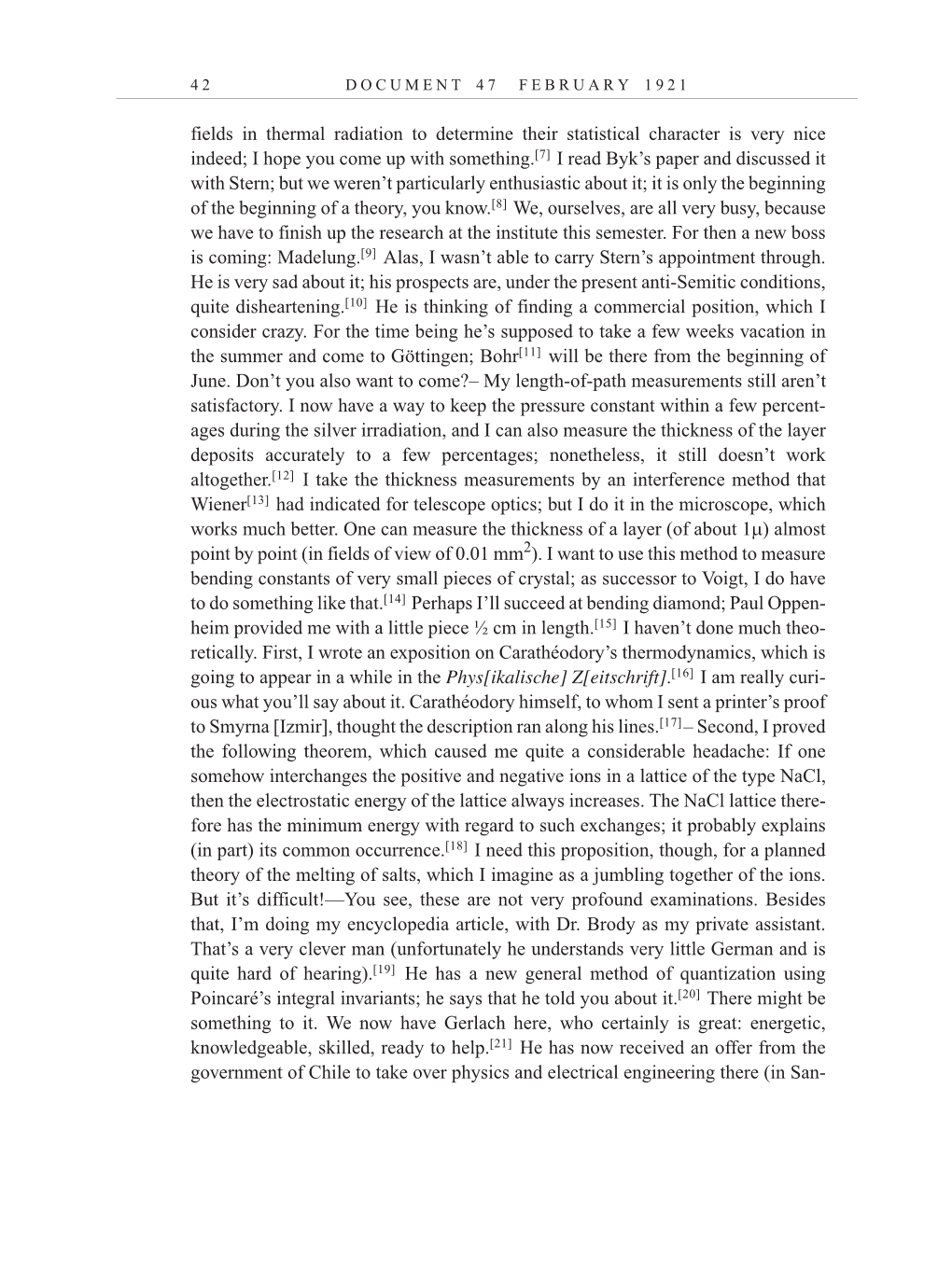4 2 D O C U M E N T 4 7 F E B R U A R Y 1 9 2 1
fields in thermal radiation to determine their statistical character is very nice
indeed; I hope you come up with
something.[7]
I read Byk’s paper and discussed it
with Stern; but we weren’t particularly enthusiastic about it; it is only the beginning
of the beginning of a theory, you
know.[8]
We, ourselves, are all very busy, because
we have to finish up the research at the institute this semester. For then a new boss
is coming:
Madelung.[9]
Alas, I wasn’t able to carry Stern’s appointment through.
He is very sad about it; his prospects are, under the present anti-Semitic conditions,
quite
disheartening.[10]
He is thinking of finding a commercial position, which I
consider crazy. For the time being he’s supposed to take a few weeks vacation in
the summer and come to Göttingen;
Bohr[11]
will be there from the beginning of
June. Don’t you also want to come?– My length-of-path measurements still aren’t
satisfactory. I now have a way to keep the pressure constant within a few percent-
ages during the silver irradiation, and I can also measure the thickness of the layer
deposits accurately to a few percentages; nonetheless, it still doesn’t work
altogether.[12]
I take the thickness measurements by an interference method that
Wiener[13]
had indicated for telescope optics; but I do it in the microscope, which
works much better. One can measure the thickness of a layer (of about 1 ) almost
point by point (in fields of view of 0.01
mm2).
I want to use this method to measure
bending constants of very small pieces of crystal; as successor to Voigt, I do have
to do something like
that.[14]
Perhaps I’ll succeed at bending diamond; Paul Oppen-
heim provided me with a little piece ½ cm in
length.[15]
I haven’t done much theo-
retically. First, I wrote an exposition on Carathéodory’s thermodynamics, which is
going to appear in a while in the Phys[ikalische]
Z[eitschrift].[16]
I am really curi-
ous what you’ll say about it. Carathéodory himself, to whom I sent a printer’s proof
to Smyrna [Izmir], thought the description ran along his
lines.[17]
– Second, I proved
the following theorem, which caused me quite a considerable headache: If one
somehow interchanges the positive and negative ions in a lattice of the type NaCl,
then the electrostatic energy of the lattice always increases. The NaCl lattice there-
fore has the minimum energy with regard to such exchanges; it probably explains
(in part) its common
occurrence.[18]
I need this proposition, though, for a planned
theory of the melting of salts, which I imagine as a jumbling together of the ions.
But it’s difficult!—You see, these are not very profound examinations. Besides
that, I’m doing my encyclopedia article, with Dr. Brody as my private assistant.
That’s a very clever man (unfortunately he understands very little German and is
quite hard of
hearing).[19]
He has a new general method of quantization using
Poincaré’s integral invariants; he says that he told you about
it.[20]
There might be
something to it. We now have Gerlach here, who certainly is great: energetic,
knowledgeable, skilled, ready to
help.[21]
He has now received an offer from the
government of Chile to take over physics and electrical engineering there (in San-
